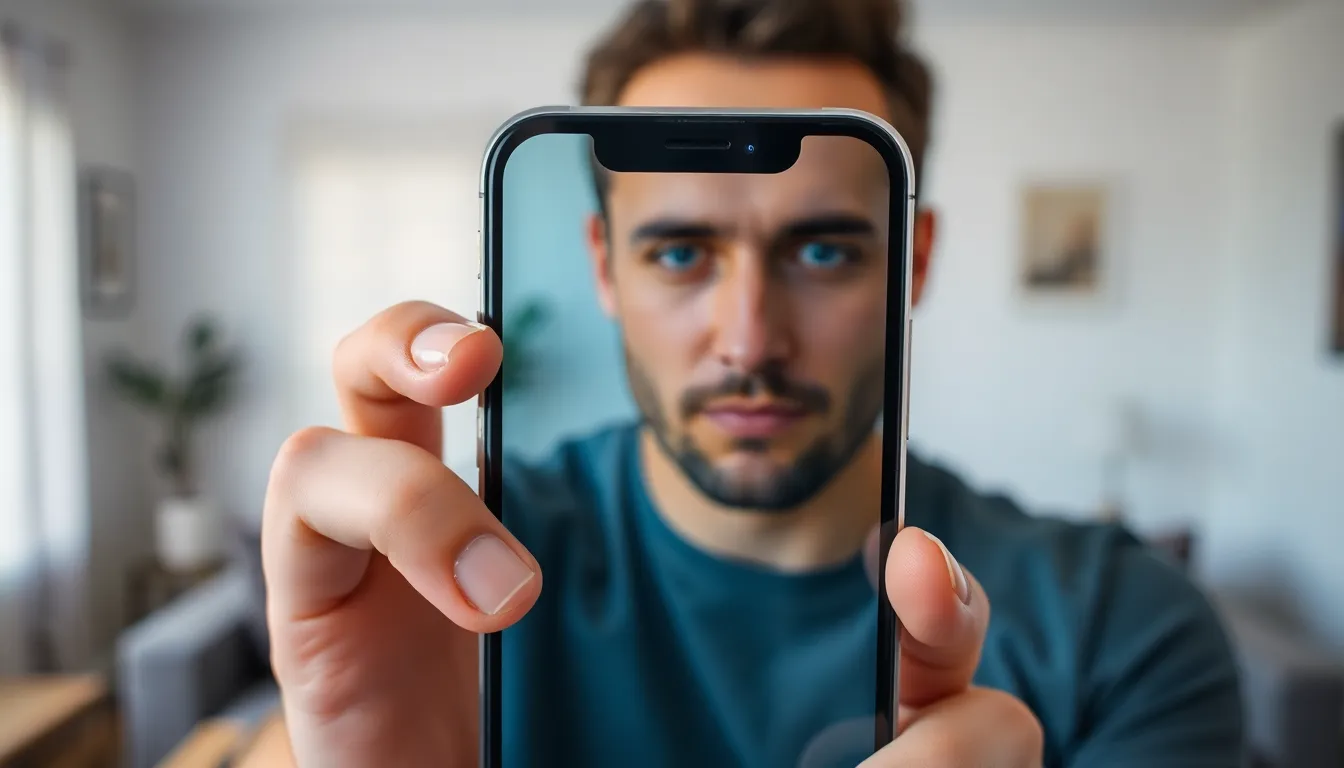Table of Contents
TogglePicture this: you’re ready to unlock your phone with a simple glance, but instead, it stares back at you like a judgmental relative at Thanksgiving. “Why won’t my Face ID work?” they ponder, as you wrestle with the frustration of technology gone rogue. It’s a common conundrum that leaves many scratching their heads and questioning their own facial features.
Whether it’s a sneaky glare from the sun or that new haircut that’s just a bit too avant-garde, there are countless reasons why Face ID might be playing hard to get. Understanding these quirks can save you from the embarrassment of repeatedly swiping in your passcode while your phone giggles at your expense. Let’s dive into the world of Face ID mischief and discover how to get back to the seamless unlocking experience you deserve.
Common Reasons For Face ID Issues
Face ID issues often stem from several common problems. Identifying these can lead to a smoother unlocking experience.
Obstruction of the Camera
Camera obstruction is a frequent culprit behind Face ID failure. Dirt, fingerprints, or smudges on the camera lens hinder recognition. A quick cleanup of the lens can often resolve the problem. Interestingly, cases or screen protectors may also interfere with the camera’s functionality. Regularly inspect the camera area for any physical barriers that could prevent Face ID from working effectively. Users should ensure good visibility without obstructions for optimal performance.
Poor Lighting Conditions
Lighting conditions significantly impact Face ID’s performance. Bright sunlight or dimly lit environments can confuse the facial recognition system. Optimal light helps the camera accurately detect facial features. When indoors, ensuring ample lighting can enhance its functionality. If outside, users might try to shield their face from direct sunlight. Adjusting their position to face a light source can also improve results. Good lighting is vital for the Face ID’s success in unlocking devices.
Face ID Settings Configuration
Incorrect Face ID settings lead to unlocking problems. Users must verify that Face ID is properly set up in the device’s settings. Sometimes, enrolling multiple appearances helps recognition, especially when users change hairstyles or wear glasses. Users can also check if Face ID is active for specific features like app access. Restarting the device may help refresh the settings. Keeping the software updated ensures compatibility with the latest features, boosting reliability.
Troubleshooting Face ID


Troubleshooting Face ID often resolves common issues that prevent recognition. Several steps can optimize functionality and improve user experience.
Restarting Your Device
Restarting the device can refresh the system and clear temporary glitches. Holding down the power button prompts the shutdown slider, which enables easy device restart. This simple action often resolves minor software issues that interfere with Face ID. Users should try restarting their devices first before seeking further solutions.
Cleaning the Front Camera
Cleaning the front camera ensures no obstructions hinder recognition. Dust or smudges can degrade camera performance, leading to failed attempts. Using a microfiber cloth gently removes dirt without scratching the lens. Regular maintenance of the camera keeps it clear and functional, thereby improving Face ID accuracy.
Updating Software
Updating software maximizes performance and security for Face ID. Regular updates contain bug fixes that enhance facial recognition features. Checking for updates is straightforward; navigating to Settings and selecting General reveals available updates. Users should always keep their devices current to ensure optimal functionality and reliability.
Advanced Solutions
Advanced methods can help when Face ID issues persist. Exploring these solutions might provide the necessary fix for comprehensive facial recognition.
Resetting Face ID
Resetting Face ID can refresh user data. Navigate to the settings and select “Face ID & Passcode.” Within this menu, find the option to reset Face ID. After confirmation, users must re-enroll their faces to enhance recognition accuracy. This process often resolves stubborn recognition issues, especially if recent changes in appearance occurred. It’s important to ensure proper lighting during re-enrollment to foster better results.
Device Recovery Options
Device recovery options are useful when software problems interfere with Face ID. Connecting the smartphone to a computer and launching recovery mode may restore functionality. Each brand has specific key combinations to enter recovery mode, so checking the manufacturer’s guidelines is essential. After accessing recovery mode, users can choose to update software or restore factory settings. Restoring factory settings may eliminate persistent glitches but should be a last resort. Backing up data before this action is crucial to avoid loss.
When To Seek Professional Help
Persistent Face ID issues may require professional assistance. If troubleshooting steps fail to resolve the problem, seeking help becomes essential. Hardware malfunctions, such as a damaged front camera or sensor, often hinder Face ID performance. Signs of damage might include cracks or disconnections that affect facial recognition.
Unexpected behavior, like frequent error messages, signals a potentially deeper issue. Users should consider contacting a technician if they notice irregularities after following standard troubleshooting tips. Backup data before seeking repairs, as it ensures important information remains protected.
Apple Support provides valuable resources for users experiencing ongoing challenges. Visiting an authorized service provider leads to professional diagnostics and solutions tailored to the device’s needs. Guaranteeing that all options have been explored is crucial before involving a professional.
Software conflicts may also require expert intervention. If updates and resets don’t resolve the problem, it may indicate a need for comprehensive software evaluation. Professionals can identify issues that frequently escape average users. Engaging with a technician improves the likelihood of accurately diagnosing the problem.
Moreover, if a device feels unusually warm or shows other signs of distress, seeking help should happen without delay. Quick response enhances the chances of restoring Face ID functionality. Proper evaluations can prevent further complications and prolong the device’s lifespan.




